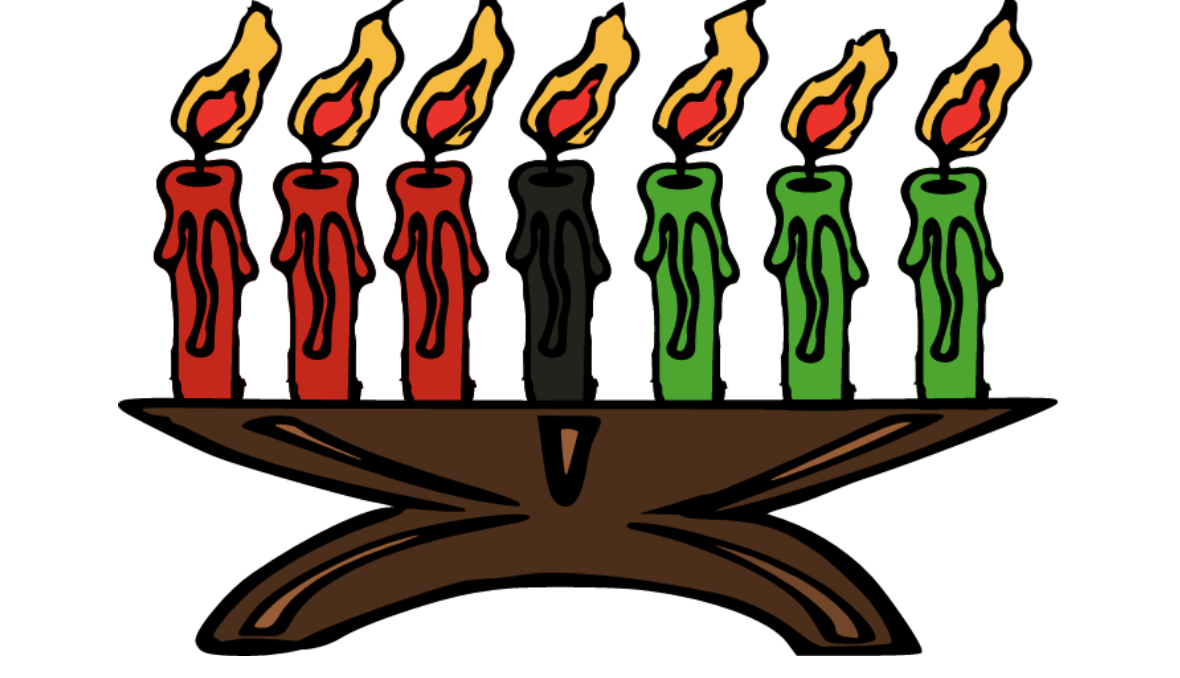All About Kwanzaa
What does Kwanzaa mean? The name Kwanzaa is formally derived from the following phrase in Swahili: “matunda ya kwanza” meaning “first fruits.”
Who created Kwanzaa? Dr. Maulana Karenga, a professor and chairman of Black Studies at California State University, Long Beach, created Kwanzaa in 1966 as a way to bring African Americans together as a community.
How do people celebrate Kwanzaa? There is no universal way to celebrate; each family celebrates in its own way. Some typical Kwanzaa celebrations include songs and dances, drumming, storytelling, poetry, and a large traditional meal.
The celebrations last over seven nights: on each of the individual nights the family will gather and a child lights one of the candles on the Kinara, or candleholder. After the candle is lit, one of the seven principles are discussed.
These principles are known as the Nguzo Saba: “seven principles” in Swahili. They are cultural values central in countries including Kenya and Uganda, and they contribute to building and reinforcing community among African American people.
The first principle is Unity (Umoja): to strive and maintain unity in family, community, and nation. The second one is Self-determination (Kujichagulia). Thirdly is Collective Work and Responsibility (Ujima): to build and maintain the community together, sharing an approach to a community’s problems. Fourthly, Cooperative Economics (Ujamaa): to build and maintain community stores, shops, and other businesses so that community members profit from them together. Filthy, Purpose (Nia): to make a collective vocation and build and develop community. Sixthly, Creativity (Kuumba): to always do as much as one can, in the best way one can, in order to leave a community more beautiful and beneficial than one inherited it. Lastly is Faith (Imani): to believe with one’s heart in community leaders and elders.
What are the seven symbols? The seven symbols of Kwanzaa are as following: Mazoa: the crops; Mkeka: PlaceMat; Vibunzi: Ear of Corn; Mishumaa Saba: The Seven Candles; Kinara: The Candleholder; Kikombe Cha Umoja: The Unity Cup, and Zawadi: Gifts.
On the last night of Kwanzaa, December 31st, a huge African feast is served called Karmu. Examples of dishes served at Karmu are catfish, collard greens, Jollof rice, and okra.
Although Kwanzaa is not a very commercialized holiday in the US it is still a very important part of many peoples lives. In addition to the values expressed above, Kwanzaa is all about gratitude and community; understanding what you have, sharing it with others, and growing and bettering yourself and your community making it stronger.
Work Cited
History.com Editors. “Kwanzaa.” History.com, A&E Television Networks, 14 Oct. 2009, www.history.com/topics/holidays/kwanzaa-history.

